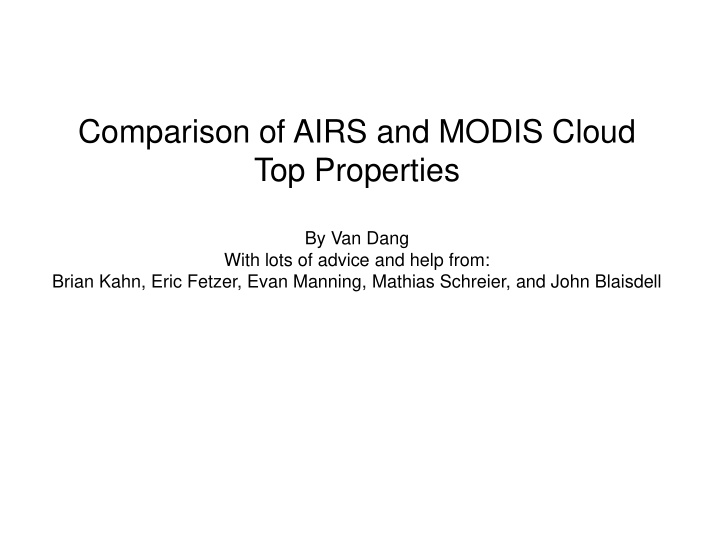



Comparison of AIRS and MODIS Cloud Top Properties By Van Dang With lots of advice and help from: Brian Kahn, Eric Fetzer, Evan Manning, Mathias Schreier, and John Blaisdell
MODIS ECF AIRS ECF MODIS CTT AIRS CTT
HISTOGRAM OF MODIS ECF THAT ARE MATCHED WITH AIRS ECF
Methods of comparing AIRS’ and MODIS’ Cloud Top Properties • Comparing cloud property measurement within an AMSU footprint obtained by averaging all the 9 ECF from AIRS FOV regridded to the nearest .5 degree lat/lon bin with all the averaged MODIS ECF that falls within that .5 lat/lon bin. Comparing the cloud property measurement within an AMSU • footprint obtained by averaging all the 9 ECF from AIRS FOV to the corresponding MODIS footprints weighted according to each individual AIRS top-hat and then averaged. The top-hat function was based on the AIRS channels for cloud property derivation and compared to MODIS’ channel number 32 (12.02µm)
.5 deg data Both filtered for when collection of MODIS data within .5 degree reports 90% of one cloud layer.
Filtering by AIRS reporting one cloud layer .5 deg data Filtering by AIRS reporting one cloud layer and MODIS using CO2 slicing to derive values
Filtering by AIRS reporting one cloud layer .5 deg data Filtering by AIRS reporting one cloud layer and MODIS using CO2 slicing to derive values
Filtered by AIRS indicating two cloud layer measurement
Filter by Filter by being neither PBest nor PBest PGood
Coloring of circles represents AIRS ECF No Filtering .5 deg data Filtering by AIRS reporting one cloud layer
Filtering by AIRS reporting one cloud layer and MODIS .5 deg data using CO2 slicing to derive values
Conclusion: • AIRS and MODIS ECF compares well if the cloud is high • AIRS and MODIS CTT compares well if the ECF were large and that there is one cloud layer
Recommend
More recommend